Common Name(s): Mango, Hawaiian mango
Scientific Name: Mangifera indica
Distribution: Tropical Asia and Oceania
Tree Size: 80-100 ft (24-30 m) tall,
less than 3-4 ft (1-1.2 m) trunk diameter
Average Dried Weight: 42.1 lbs/ft3 (675 kg/m3)
Specific Gravity (Basic, 12% MC): 0.52, 0.68
Janka Hardness: 1,070 lbf (4,780 N)
Modulus of Rupture: 12,830 lbf/in2 (88.5 MPa)
Elastic Modulus: 1,672,000 lbf/in2 (11.53 GPa)
Crushing Strength: 7,240 lbf/in2 (49.9 MPa)
Shrinkage: Radial: 3.6%, Tangential: 5.5%,
Volumetric: 8.9%, T/R Ratio: 1.5
Color/Appearance: Because of the spalting that is commonly present, the wood can be a kaleidoscope of colors. Under normal circumstances, heartwood is a golden brown, while other colors such as yellow and streaks of pink and/or black can also occur. Paler sapwood is not always clearly defined. Curly or mottled grain patterns are also common.
Grain/Texture: Grain can be straight or interlocked. With a medium to coarse texture and good natural luster.
Rot Resistance: Mango is rated anywhere from moderately durable to perishable. However, Mango is also susceptible to both fungal and insect attack.
Workability: If interlocked or wild grain is present, tearout is common when machining. Reaction wood may also be present, which can shift as it is being sawed, potentially causing binding on the blade. Has a fairly high silica content, and will readily dull cutting edges. Glues and finishes well.
Odor: No characteristic odor.
Allergies/Toxicity: Although severe reactions are quite uncommon, mango has been reported to cause skin irritation. See the articles Wood Allergies and Toxicity and Wood Dust Safety for more information.
Pricing/Availability: Steady availability from specialty sources, usually from Hawaii, though Asian sources are also common. Mango is sold in board and slab form, as well as craft and instrument blanks. Prices for unfigured boards are in the moderate range for an imported lumber, and it is usually less expensive than koa, another popular Hawaiian hardwood. Figured boards with curly figure, spalting, and/or vivid coloration are much more expensive.
Sustainability: This wood species is not listed in the CITES Appendices, but is reported by the IUCN as being data deficient. This is due to the widespread cultivation of the tree, making it hard to distinguish the true extent of occurrence and area of occupancy of wild trees versus naturalized trees.
Common Uses: Furniture, ukuleles, veneer, plywood, turned objects, and flooring.
Comments: Known much more widely for its fruit, mango trees also yield beautiful and valuable lumber. The wood is considered very eco-friendly, as some mango plantations harvest the trees for lumber after they have completed their useful fruit-bearing lifespan.
Images: Drag the slider up/down to toggle between raw and finished wood.
Identification: See the article on Hardwood Anatomy for definitions of endgrain features.
Porosity: diffuse porous
Arrangement: solitary and radial multiples
Vessels: large to very large, very few ; reddish-brown deposits occasionally present
Parenchyma: vasicentric, lozenge, confluent, and banded (marginal)
Rays: narrow width; normal spacing
Lookalikes/Substitutes: Mango can sometimes get confused with rubberwood (Hevea brasiliensis) because both woods have large, diffuse open pores and both are seen on imported finished furniture and kitchen/household implements. However, the two can be separated based on the parenchyma: rubberwood has much more extensive parenchyma bands forming a reticulate pattern with the rays, as well as diffuse-in-aggregates apotracheal parenchyma.
Notes: Heartwood portions give a streaked green fluorescent response under blacklight.
Related Content:

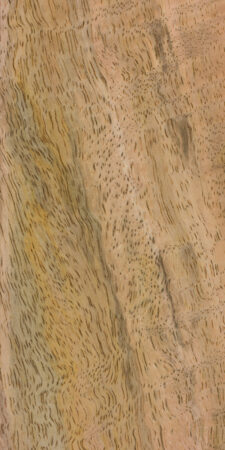
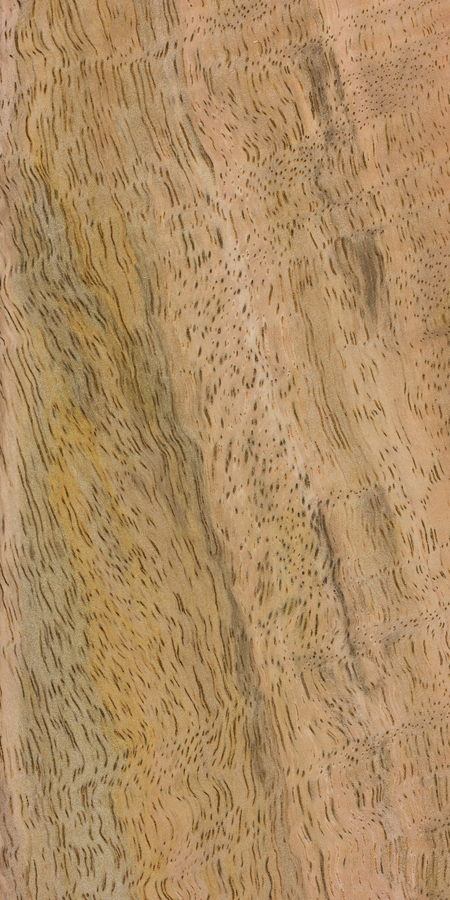
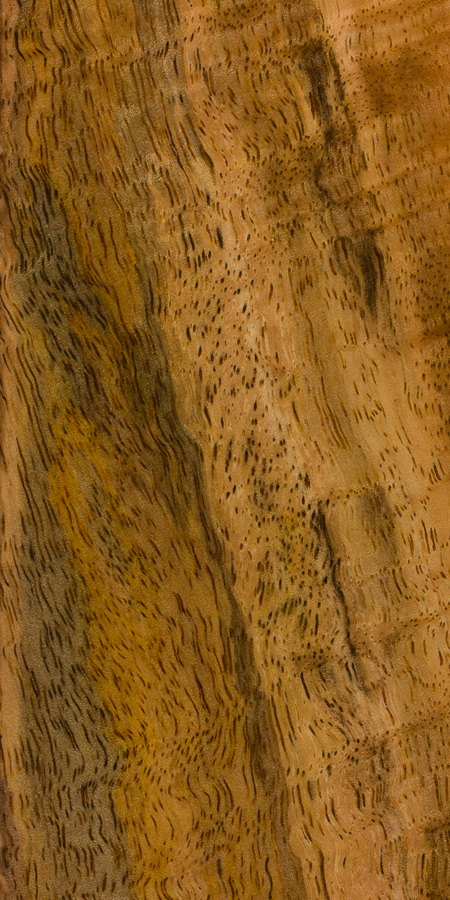
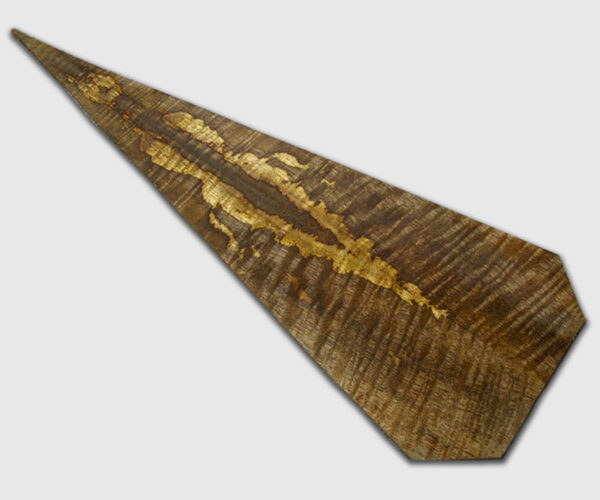

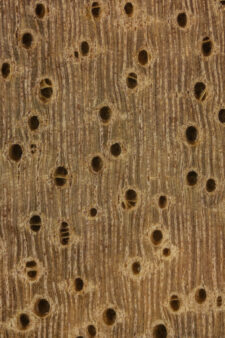



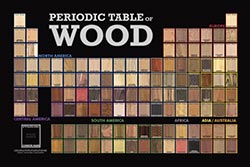


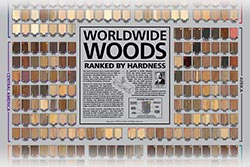



Hello
I had a question
Does burning mango wood release any gases other than gases like CO2 ? Like some people say it releases formaldehyde gas? Is it true?
I’ll be highly grateful
Here are a couple of examples of Mango wood shot glasses
I wanted to buy bedside tables made from mango wood but the will be to wide for the space am I able to trim some off the wood before attaching the the steel side on it
For a kitchen product to be made of mango (such as a cutting board, bowl or tray), is there a food-safe finish that would make sense? Would that be in addition or instead of any other finishes? Basically, just asking how to make sure mango wood can be made (and maintained as food-safe). Thanks!
shellac
Just got an unfinished dresser made of mango wood and it is very light/almost white. What should I finish it with or seal it with to give it that natural variation mango wood look?
start with a sealer coat of no wax shellac/ It’s compatible with oil and water products being lacquer/ may consider a wiping clear poly doing thin coats until you look and fell what your satisfied with
can you buy anything that will make oak wood look like mango wood?
Best you could do is try to match color with a stain. But that would still not account for the differences in grain type. Since oak is ring porous and mango is diffuse porous, I would try to use a wood dye (like TransTint) rather than a wood stain to match color as this will not accentuate the growth rings on oak as much.
Trying the same!! Did you have any luck?
How long does mango wood take to dry out suitable to make chips for smoking foods?
Depends on how and when it’s processed. If you made the wood into small chips and laid them out on a tarp, I bet they’d be dry within a few days. If you left the wood as solid logs and waited for it to dry, it may take years.
What is the suitable moisture content for a mango slab table top to be placed , varnished out doors please
the answer is no MC is suitable for any species of mango outdoors – despite the specs above, mango is not at all durable outdoors (unless painted with several coats of alkyd enamel), and once wet, mango is highly susceptible to termite, borer infections and blue stain. For interior use mango should be dried down to 8% or less to ensure there is no food for Lyctidae beetles (powder post).
Ive read mango wood has to be chemically treated as does rubber wood due to high susceptibility to bugs.Can the chemicals leak out and does it have an odor ? Is it save indoors?
I mad a bed and nightstands from mango and have been sleeping with them for 15 years. It has no odor; most mango is kiln dried and this kills the bugs.
I bought a mango wood hate and after a few months the of use, I had yellow dust all over the carpet around the gate and saw it coming out of the wood. I bought another gate.
Mango needs to be treated against bugs.
I was cleaning around my mango wood end table and found piles of saw dust underneath it. I don’t see an obvious infestation, but obviously there were some pests that came along in the package. Any thoughts what it could be and how I can make sure that they haven’t spread to other areas of my house (I don’t see any evidence that in the surround area.
I recently bought a mango wood coffee table and I am looking to buy some more furniture. I want to mix the wood and I was wondering if you can recommend what wood would be good to mix with it.
Is sun drying of mango wood for three month in subtropical condition (diameter 15-30 inches and length 40-45 inches) is accurate method. Or any other method to dry mango wood pieces of this dimension in large quantity.
No, air drying of wood is not sufficient.
You need forced drying of wood ie kiln dried.
Nature cannot extract moisture below FSP level I.e. approx 25%.
You can feel dryness in top but underneath it is not.
Thanks
We air-dry in an A/C room set to dry with a fan blowing. 2″ thick boards (9″x22″) dry to about 10-12% according to our digital moisture content reader. This after a few weeks, and they started at about 30%.
I have 3 x 20 x 100 cm manggo wood, already air dried and now average moisture content is 18% on top and 23% on bottom side. I’d like to start to use my conventional direct fire kiln dry chamber, it only has a firebox and pipe with blower to flow the heat from the firebox to the inside of chamber. With only temperature sensor and no humidity sensor. It also has only 2 standard fan, 1 fan to circulate the air inside and the other one to make air out when temperature gets too hot. Would you please share… Read more »
i recently purchased a 2″x 39″x 79″ kiln dried slab of mango to build an epoxy river dining room table , is there a way I can get the wood to gray in tone without stain? i saw a sample of mango and it grayed on its own and looked awesome!
You can use a vinegar and steel wool solution, or leave it out in the sun for a while.
I just bought an unfinished mango wood dining table and have concerns with possible staining. Can you tell me how you will care for yours?
My mango wood table is lighter than I’d like. Can I stain or use minwax to achieve a darker look. If so any directions would be helpful.
You can stain it, but in order to get a proper and uniform stain, you’d have to strip and/or sand off the existing finish and ensure you get down to raw wood. After that, you would just follow directions on the product. I’d recommend sanding out a part on the underside of the table and testing the stain there first (or in another inconspicuous place) before diving into staining the entire top.
what is the uses of 3” dia mango poles of 7 feet length , which is obtained by trimming the over grown tress. Can you suggest the uses
I just purchased a mango dinning.g table and chairs. I would like to protect the table top with glass. Would this work,since I understand the wood needs to be polished with oil occasionally.
Out of six original dinning room tall chairs and two replacements all made of Mango, six failed beyond repair from simple stress at the joints of the seat and the legs. All of this happened within three years of purchase of the original set. Not a happy camper over this. Will look for old furniture before I ever purchase new made of mango.
I make chairs and other furniture’s a hobby business. I am sure the chairs failed because of poor leg to seat joints. All of my chairs have the Sam Maloof dado leg to seat joint which is the strongest joint one can use. I do not know what you paid for your chairs but quality chairs with strong joints will cost more than what you get in your normal furniture store or mass produced products we have available today. I have made 5 mango rockers and one armless dining room chair and never had a problem wth any of them.… Read more »
Can you paint over mango wood furniture after it has had colour rubbed in? Want to paint with white satin.
Is mango wood suitable for use as a cutting board – for food?
Hi Nia, yes it is. You can season the board with several coats of vegetable oil to make it easier to clean. I have severa mango chopping boards from Scumble Goosie!
Harry
I live in the Florida Keys and recently had to cut down a Mango tree on my property that unfortunately was growing above a drainage line. I saved the main trunk and would like to dry and season the wood but other than beginning by stripping off all the bark have no idea how to proceed. Any suggestions?
Hi Patrick, your biggest problem is to keep termites and bugs away from your trunk. So, keep the trunk well of the ground and allow air to flow around it. Termites and bugs come as long as the wood is wet ( cellulose smell) so try to keep it under a roof or in a barn. Check it so now and then for termites and bugs. You can let the trunk dry for years that way if you have the time and patience for it. It can, however, build up tensions in the trunk which could be tricky when re-sawing.… Read more »
Hello Paul, thanks very much for your response to my question re Mango wood. I’m much obliged for your willingness to share your knowledge and expertise. I will proceed with your recommernded method and while I’m at it mention that I also have a nice section of the trunk of a Mangrove tree which has been drying since 2003. I debarked it several days after it was cut and it’s been inside since then so should be more than ready to work with. After Hurricane Wilma in 2005 I had to take out a sour orange tree that died and… Read more »
Paul, I just bought mango slabs. I will cut them into guitar backs and sides, which are about .18″ thick. Do I need to let the mango dry for 2 years first, or can I slice it and then let the slices dry? What steps would I need to take with the slices? Thanks in advance…
I recently got a mango wood desk, and was wondering if it was durable enough to hold a c-clamp dual monitor stand. It would likely be holding about 30 pounds; the desk is about 1 1/2 to 2 inches thick.

No problem.
To Lynn. I am not a professional wood worker but do work with wood a lot. Generally, if there is a varnish, especially if it is a thick outdoor varnish, I would first use a a brush on stripper. Wear chemical resistant gloves or at least dish washer gloves (new, no holes). You don’t want to get it on your skin. Have a bucket of water beside you in case you do. Wear eye protection. Then use, or skip the stripper and start with 80 grit until you get to the natural color, then go to 120 or 150 then… Read more »
My mango furniture is too dark. Can I sand it and stain light oak to lighten it?
It’s possible, but potentially a LOT of elbow grease. Some people like refinishing furniture. For me, it’s almost as easy just to build the thing over from scratch! To each their own I guess.
Crikey, build furniture. Am not that skilled, but changed my well made pine bedroom suite look like liked oak. As you say, a of of elbow grease, but successful. Maybe I will hire a sander. Can you recommend a product/oil/stain? Thanks for advice.
Limed oak.
If you sand it thoroughly down to raw wood, Mango should stain pretty well with most products. Just keep in mind that it doesn’t really have the same type of porous growth rings as oak, so you can’t quite compare color samples of the darker growth rings that oak might get when you compare stain colors.
mango wood, true mango wood is light colored, never dark, ever.
That is not true. Old growth Mango can be very dark, with highly figured grain.
Anyone know what kinda wood this is?
Mango wood is highly water-resistant and as such it’s good for outdoor wood projects.
This is an interesting read. Recent study shows that we can use mango wood for furniture, its a hardwood. Though its a hardwood it is considered one of the softest hardwood. Given the fact that it is sustainable as well. To know more about mango wood its features and uses, visit https://thebasicwoodworking.com/what-is-mango-wood-features-and-uses/
Mango wood is durable and can last for years and years. If you want to know more about mango wood furniture and it’s use you can visit https://unwind.com/blog/design-your-ekornes-stressless-furniture-online/
Is this wood one that can be used with food? Such as a salad bowl.
The hard and dense mango wood is perfect for making kitchen accessories like chopping boards, serving trays, bowls, salad servers, etc.
Is this wood hard enough to work well for book shelves holding lots of books? I’m looking at an expensive bookcase with mango shelves and I’m hoping they will not sag like the shelves I currently have. Is there a janka hardness number i should be looking for?
Janka hardness won’t tell you much. You should be looking at Modulus of Elasticity (MOE).
But beyond that, a lot will depend on how the actual shelves are made — i.e., if they are supported in the back, if they have reinforcement on the front edge, etc.
how long does it take to air dry
Might have some issues while sanding, but finished furniture shouldn’t be a problem.
Does anybody know how long it takes to dry 4/4 Mango or Koa in a Vacuume Kiln
It will take 6-7 days.
Regards
Rajneesh